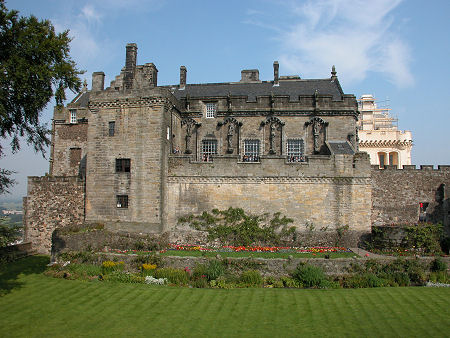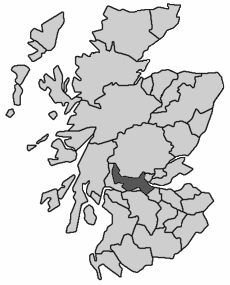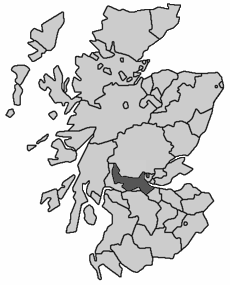 Stirling Castle |
Stirlingshire, also known as the County of Stirling, was one of the 34 traditional counties into which Scotland was divided for administrative purposes. It extended diagonally across the centre of Scotland from the south bank of the River Forth east of Grangemouth to the east bank of Loch Lomond north of Balmaha.
 Stirlingshire, 1890 to 1975 Note About Image Copyright |
Important settlements included Stirling, Bridge of Allan, Grangemouth, Falkirk, Kilsyth, and Balmaha. Stirlingshire was bordered by the traditional counties of Dunbartonshire, Perthshire, Clackmannanshire, West Lothian, and Lanarkshire. It also traditionally had an exclave around Alva in Clackmannanshire, and another in Perthshire.
A tidying up of the map of counties which reduced their number to 33 in 1890 transferred ownership of Stirlingshire's exclaves to Clackmannanshire and Perthshire. Stirlingshire remained a county in its own right until reorganisation in 1975 swept all the counties away in favour of 12 regions.
The regions formed in 1975 were the upper tier of a two tier local authority system, and the area which had formed Stirlingshire became part of Central Region. Most regions were divided into a number of district council areas, and Central was divided into three districts. Most of Stirlingshire became the Stirling District of Central Region. It lost an area at its eastern end, which became the western part of a new Falkirk District. There were also a number of boundary changes along its southern border which saw it lose areas to help form Strathkelvin District and Cumbernauld & Kilsyth District, both in Strathclyde Region.
The District of Stirling also gained a large area, previously known as "West Perthshire" from the traditional county of Perthshire. This stretched from Killin in the north-east to Tyndrum in the north-west, and south past Crianlarich to take in Callander, Aberfoyle, Doune and Dunblane.
Regions and districts disappeared from the scene in a major reorganisation in 1996, being replaced by 32 unitary council areas. What had started out as the traditional county of Stirlingshire mostly now forms the unitary council area of Stirling, though parts have also ended up in Falkirk, East Dunbartonshire and North Lanarkshire.

